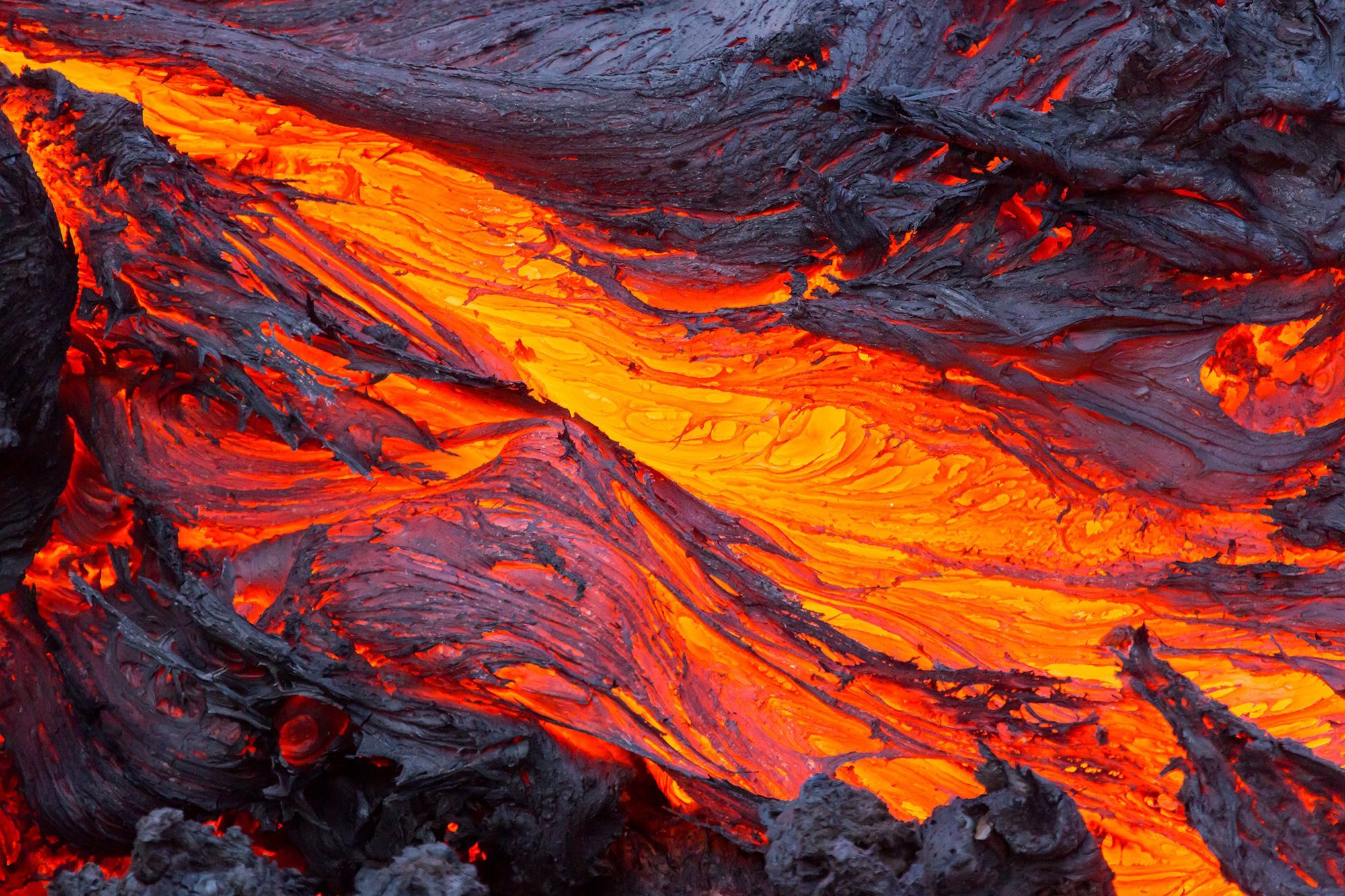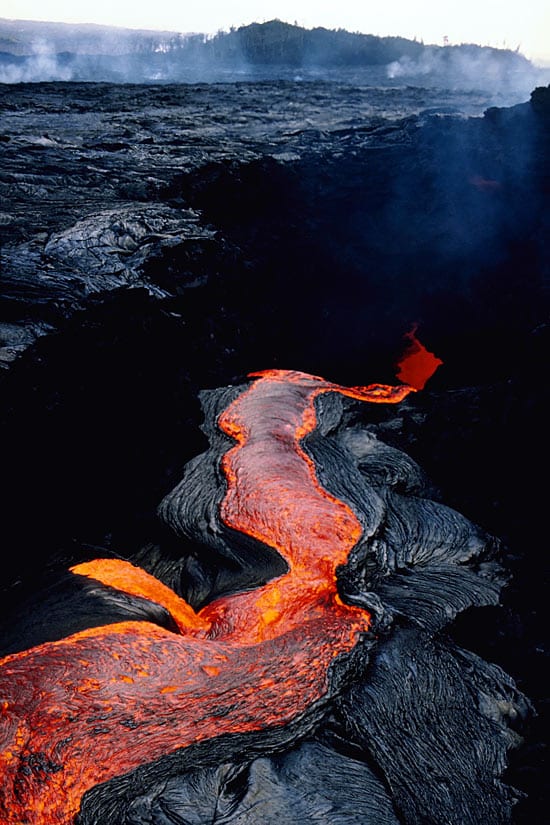Which Term Is Used When Describing Characteristics of Magma Flow
When lava cools it forms volcanic or extrusive igneous rock which accounts for about 15 of the surface area of the earth. What are three general characteristics of magma.

Magma National Geographic Society
A sedimentary rock composed of angular fragments that were lithified.

. In the concept of mineralogy or geology in the much broader sense two terms are commonly used to describe the characteristics of rocks and also lava. Suspended crystals and fragments of unmelted rock may be transported in the magma. Viscosity is a liquids resistance to flow.
As in Oil the thicker it is the higher the. The word derives from a composite of the chemical symbols for Magnesium Ma and Iron Fe. Felsic magma is viscous and does not flow easily.
This magma has a low viscosity which allows for gases to escape the volcano and for the lava flows to erupt calmly and predictably. The main term used to describe the characteristic of magma flow is viscosity. Layering of preexisting rock o Discordant Intrusive a term used to describe from GLY 1010 at Florida International University.
GlyFinalTerms1 - Geology terms from the book. The flow of magma in eaths crust is called lava. Basaltic magma-- SiO 2 45-55 wt high in Fe Mg Ca low in K Na.
Lava- The term used for magma once it has erupted onto the Earths surface. Dissolved volatiles may separate as bubbles. Andesitic magma-- SiO 2 55-65 wt intermediate.
-parent material of igneous rocks. Viscosity is how thick a fluid is. Are rocks formed from lava extrusive or intrusive.
Mafic is a term used to describe the densest lava flows. When magma comes to the earths surface usually but not always as the result of a volcanic eruption it is called lava. Magma is found beneath the surface of the Earth and evidence of magmatism has also been discovered on other terrestrial planets and some natural satellites.
Magma molten or partially molten rock from which igneous rocks form. The more solid it is the higher the viscosity. Vesicular ejecta that is the product of basaltic magma.
Besides molten rock magma may also contain suspended crystals and gas bubbles. When used to describe the characteristics of lava mafic lava would mean that it is runnier or more viscous as opposed to the felsic lava. Course Syllabus Describe some applications and limitations of isotopic techniques for geological dating.
-formed by partial melting of rocks. Describe the techniques for dating geological materials using tree rings and magnetic data. Three general types are recognized but we will look at other types later in the course.
Depending on the chemistry viscosity and eruption style lava flows can have very different and distinct appearances. These terms are mafic and felsic. Magma or lava fragments that have fast-expanding gas found with magma that is cooling rapidly.
Magma migrates either at depth or to Earths surface and is ejected as lava. It usually consists of silicate liquid although carbonate and sulfide melts occur as well. Magma is the molten or semi-molten natural material from which all igneous rocks are formed.
A structure that results from the emplacement and crystallization of magma beneath the surface of the earth blobs under the earth of crystallized magma Scoria. Use isotopic data to estimate the age of a rock. The ease with which it flows or how thin or thick it is.
Liquefaction - The process in which a solid soil takes on the characteristics of a liquid as a result of an increase in pore pressure and a reduction in. Lava flow - Stream of molten rock that erupts relatively nonexplosively from a volcano and moves slowly downslope. Extrusive or volcanic rocks Are rocks formed from magma at.
Earths Interior Explain the variations in the composition and characteristics of Earths different layers. A fluid that is viscous is thick and. Most felsic magma will stay deeper in the crust and will cool to form igneous intrusive rocks such as granite and granodiorite.
Types of Magma Types of magma are determined by chemical composition of the magma. Viscosity determines what the magma will do. At a continental rift zone the asthenosphere-derived melt is also mafic but the rising hot basaltic magma may warm the more granite continental crust enough to produce some silica-rich melt also- making _____ the volcanic equivalent of granite- or the basaltic magma may incorporate some crustal material to make.
-magma at surface is called lava. When magma is erupted from a volcano it moves down the slope of the volcano and surrounding topography as it cools. What is the term for the flow of magma through cracks in the earths surface.
Magma is produced by melting of the. In Fe Mg Ca Na K. Lava can flow for distances of over 100km and at speeds near 30 miles per hour.
Mafic magma is not viscous and will flow easily to the surface. This term is used to describe magma or lava which has exploded into fragments but it can also mean deposits formed by very aggressive volcanic activity. A flow of lava that sets inside of a depression or hole of some type.

Lava Flows Woods Hole Oceanographic Institution

What Term Is Used When Describing Characteristics Of Magma Flow Lisbdnet Com

No comments for "Which Term Is Used When Describing Characteristics of Magma Flow"
Post a Comment